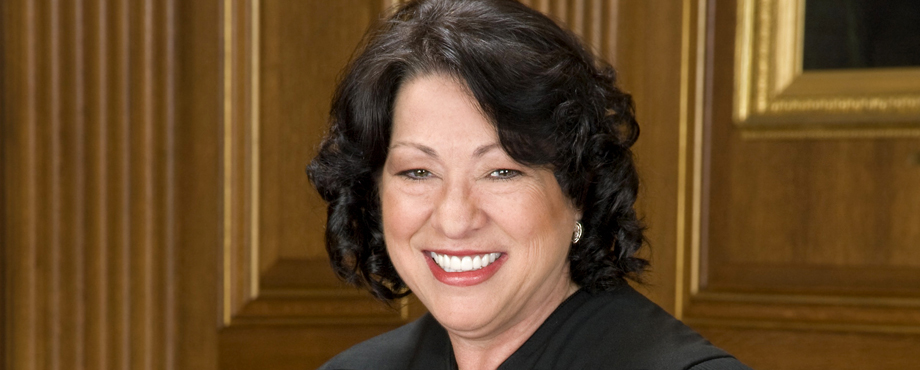(Freedom.news) To hear U.S. Supreme Court Justice Sonia Sotomayor tell it, the primary qualification to sit on the nation’s highest court has nothing at all to do with whether or not you can properly interpret the U.S. Constitution and the original intent behind the various amendments, articles and sections.
Much more important is the color of your skin, your gender, your religion and the college you attended.
During a recent Q & A at Brooklyn Law School, the high court’s first Latino woman riffed on President Obama’s pick of U.S. Appeals Court Chief Judge Merrick Garland to replace one of the court’s few originalists, the late Antonin Scalia, because Garland’s a white guy who went to Harvard.
“I … think there is a disadvantage from having (five) Catholics, three Jews, everyone from an Ivy League school,” said the Yale Law School grad.
She went on to recount a 2009 oral argument in which Justice Ruth Bader Ginsburg suggested that her then all-male colleagues had wrongly equated a strip-search of a middle-school girl to changing for gym class in a locker room because they had “never been a 13-year-old girl” [or identified as one, I suppose]. Well, that may have been true, but what had that to do with whether or not the action was constitutionally permissible? Absolutely nothing, of course, and the high court went on to get it right, ruling 8-1 that such searches were unconstitutional.
That seemed lost on Sotomayor, who went on to tell her Brooklyn Law audience, “[A] different perspective can permit you to more fully understand the arguments that are before you and help you articulate your position in a way that everyone will understand.”
Whether or not all Americans “understand” a high court decision is not the point nor should it be a consideration for justices. Their duty is to decide whether certain laws and, in the modern era, bureaucratic rules fit within the construct of our Constitution. [For the record, this is what makes Scalia’s loss that much more profound: He made decisions about cases based on the original intent of the framers and of those who proposed and passed additional constitutional amendments beyond the Bill of Rights.]
The only thing more constitutionally offensive than Sotomayor’s observations about the sexual-, social- and educational makeup of today’s Supreme Court is the politicization of the justice selection process. In considering his first two picks – Sotomayor and Elena Kagan – Obama was never concerned about whether they were constitutionally competent, only that they were sufficiently dedicated to the cause of advancing a Left-wing political agenda long after he leaves office [and they will surely attempt to do so].
While some might be inclined to make the “political consideration” argument about high court nominees offered by Republican presidents, the record is clear: The court’s constitutional originalists – the late Scalia, along with Justices Clarence Thomas and Samuel Alito – were all nominated by Republicans in the White House. The difference in judicial nominees doesn’t get any more stark.
Original intent is likely to continue getting short shrift if Obama’s most recent pick is considered by the Senate. So far that doesn’t seem likely; GOP Senate Majority Leader Mitch McConnell has maintained Merrick won’t get a hearing before the full chamber before the November elections, to give the American people a voice, possibly, in selecting the next justice.
In all honestly, that shouldn’t matter. The Judicial Branch and selection to its highest court in particular was supposed to remain aloof from national politics, hence a justice’s lifetime tenure.
But Sotomayor’s comments reveal an underlying sentiment more commonly held than most Americans believe or understand: That constitutional interpretation and application are far less important when choosing a Supreme Court justice than a candidate’s college address, color of skin and genitalia.
It’s no wonder freedom and liberty in the United States is dying.
Freedom.news is part of the USA Features Media network.


